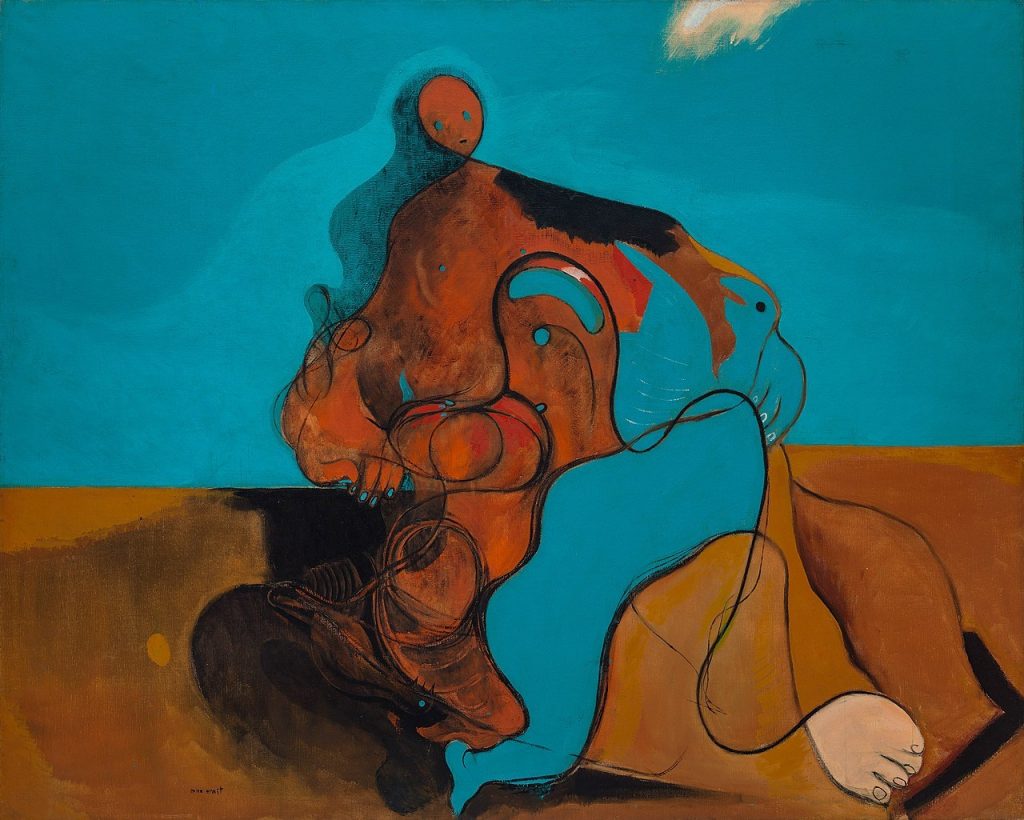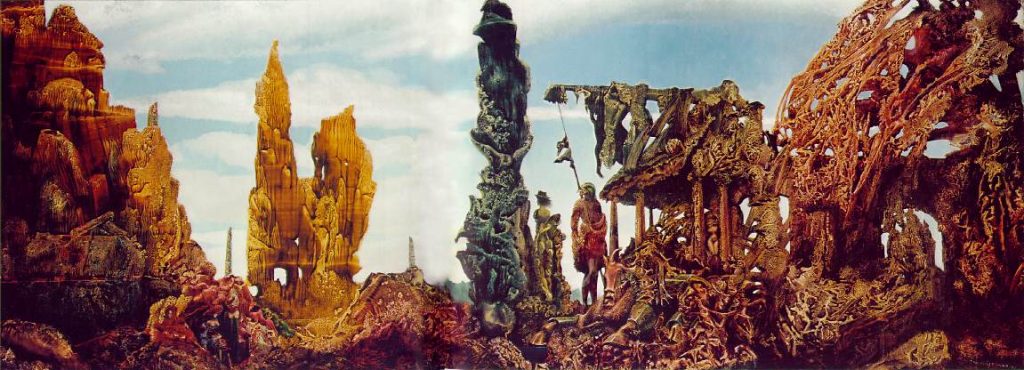Born in Germany in 1891, Max Ernst was a painter, writer, sculptor, poet and designer that spearheaded the Dadaism movement. One of the forefathers of surrealism as well, Ernst was very experimental within his work and had no formal art education.
Growing up in a large family, Ernst was rebellious and often turned to art as an outlet starting at a young age. After attending college, he traveled to see the works of Van Gogh and Picasso, which influenced his work and his freeing use of colour.
In 1914, right as Ernst was beginning to show at salons and pick up speed with his career, he was drafted for World War I, on both the Eastern front and the Western front. After the war, Ernst wrote a biography in which he said, “”On the first of August 1914 M[ax].E[rnst]. died. He was resurrected on the eleventh of November 1918”.
Making connections within the art community, Ernst made friends with Paul Éluard, whom he entered a polyamorous relationship with shortly thereafter along with Éluard’s wife, leaving his own wife and son.
His work was colourful and exciting. It grabs you immediately, with its composition and surreal subject matter. I like it a lot, and I included some of my favourites of his works below:





Jamie,
Great work on Rousseau, Corinth, and Ernst! I like that you survey a number of potential artists to write about before settling on one that stands out particularly for you. Solid research and personal insights. Just what I’m looking for.
Jeff